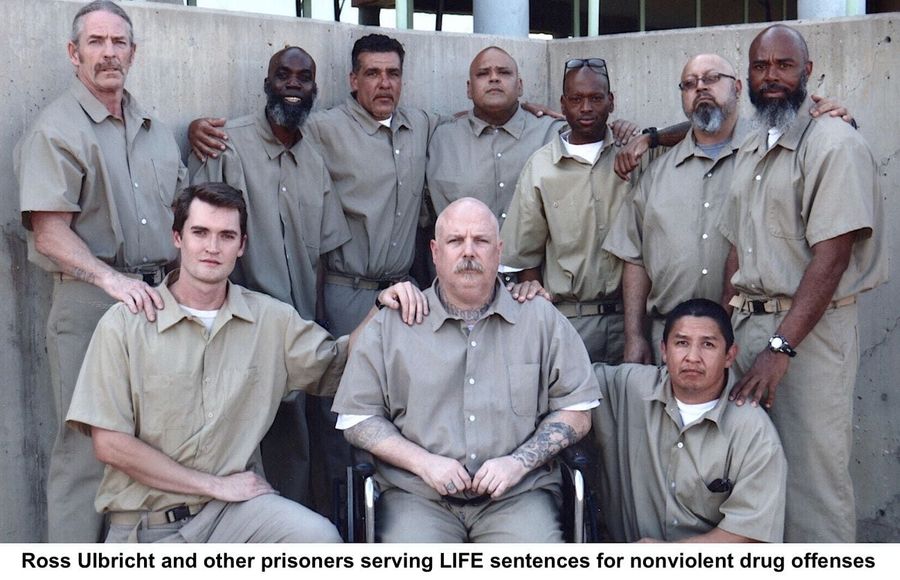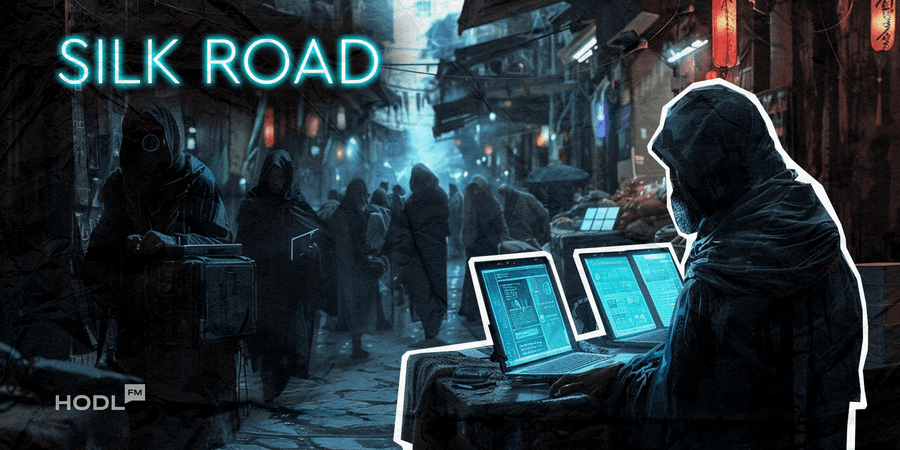The Silk Road story is one of the biggest stories of the early 2010s. It was a fascinating mix of crime, cryptocurrency, human nature, and the dark web. It is a simple story of a website that was just as unsuspecting as your everyday online marketplace like Amazon or eBay. Underneath the user-friendly interface and utility, Silk Road could only be described as the cyber-underworld’s largest black market. An FBI agent named Christopher Tarbell in the FBI’s cyber-crime unit in New York even referred to Silk Road as “the most sophisticated and extensive criminal marketplace on the Internet today.”
So, what exactly was the Silk Road story? Read along to find out.

Background To The Story
The early 2010s were the years when information technology and the Internet gained mass adoption and public use. It was when every piece of tech Silk Road needed came to full public use: cryptocurrency, privacy-focused browsing, cybersecurity, and e-commerce marketplaces.
But as the demand for this kind of tech increased, so did the laws regulating it and government scrutiny. The most crucial thing about Silk Road and its operation was the anonymity and data privacy that came with it. This was the backbone and foundation of the Silk Road, and it was embedded in every aspect of its operation. Data anonymization was originally meant to protect user data and their personally identifiable information (PII). Soon enough, criminals found it just perfect for their activities, and this is what gave birth to the Silk Road.
How did the Silk Road start?
The Silk Road was born in 2011 to connect drug sellers with buyers. It was like Facebook but for drug dealers and buyers. If you’re familiar with the German series “How to Sell Drugs Online (Fast),” then you probably have a good idea of what it looked like (except you actually used Silk Road).
Silk Road was the perfect haven for the sale of illicit goods and drug dealers, but other criminals also offered services, including fake passports, driver’s licenses, and other documents. You could also find hitmen, arms dealers, forgers, and computer hackers. It was like a one-stop shop for all your illegal needs; you could get it all online!

Silk Road was created with data anonymization technology, a trading platform, and a feedback system. What more could a criminal need? Throughout its lifetime, the website made about $1.2 billion in sales and had nearly a million customers. Needless to say, the people loved it.
How Did It Work?
Silk Road’s operation was divided into three stages:
- Data anonymization technology;
- The trading platform itself and its feedback system;
- Payment.
Starting with data anonymization, the Silk Road website was only accessible through the Tor browser, an onion-layered web browser that provided many layers of user data protection systems to ensure anonymity. While it could be used to access regular websites, the Tor browser is mostly used to access websites hosted on the dark web. Tor blocks off trackers, muddles user addresses and prevents surveillance. So that meant absolute freedom to sell drugs.
The website was also excellent, with an easy-to-use user interface, but what was its biggest catch? It’s its feedback system. After buying drugs from a particular vendor, users would give their feedback on not just the goods but also the sellers. This feedback helped the website administrators and users know which sellers were real. Even if you’re not into drugs, you just have to give it to Silk Road for efficiency. This feedback system helped the users gain more confidence in the website, and before you knew it, business was booming.

And for the last juncture of the Silk Road, the payment was as silky as it gets. Transactions on the Silk Road website were done with Bitcoin. Real money was never allowed, only Bitcoin, and it made sense. Real money meant conversion issues and, most importantly, a paper trail. You don’t need to be a drug dealer to know that paper trails are bad for business. Crypto was the perfect currency for the platform.
The FBI’s Investigation
As the saying goes, “All good things come to an end,” and sure enough, the end came for the Silk Road. It reached its end in 2013 after the FBI, DEA, IRS, and Customs agents came together to take down the billion-dollar website.
No one knows the exact details of the investigation or takedown, but experts have suggested that the government agents did it by beating the cybercriminals at their own game — hacking. However, the agents admitted that it was a challenging mission. It took work to get past the many anonymous layers of Tor, and tracing Bitcoin transactions was also difficult. Somehow, they managed to take it down.
After gaining access to the website, the FBI wasted no time shutting it down for good. They proceeded to seize more than 144,000 bitcoin, which, if converted to Bitcoin’s current price of $67,631.66 at the time of this writing, is worth $9,738,959,040. They also arrested many users of Silk Road and the man who built the road himself — Ross Ulbricht.
Ross is reported to have made about $80 million in commissions from transactions on the website.

What Was The Outcome Of The Case?
After being arrested, Ulbricht faced legal consequences with a trial that began on January 13, 2015, in a federal court in Manhattan. He was first convicted of seven charges, including engaging in a continuing criminal enterprise, narcotics trafficking, money laundering, and computer hacking. He was also accused of paying for the murders of at least five people, but there was no evidence to support that accusation. On May 29, 2015, Ulbricht was given five sentences, including two life imprisonment sentences, without the possibility of parole. Ulbricht is still serving his sentence as of the time of this writing.

The closure of the Silk Road changed the lives of many criminals. Obviously, many of them lost their source of income, and in response to that, some other similar sites were created to fill the void. Some examples included sites such as “The Farmer’s Market,” “Atlantis,” and “Project Black Flag,” all of which were eventually closed either by the FBI or by other factors.
More Info:
The Silk Road was undoubtedly unlike anything the world had ever seen. No one ever imagined a criminal version of Amazon, and to think it thrived so well and made over a billion dollars is even more baffling. But there is no website so big that the hands of the law cannot catch it. The Silk Road had a long journey, but thankfully, it came to an end. The world may not be perfect, but it has one less Silk Road. That’s a 1.2 billion dollar win.
Disclaimer: All materials on this site are for informational purposes only. None of the material should be interpreted as investment advice. Please note that despite the nature of much of the material created and hosted on this website, HODL.FM is not a financial reference resource and the opinions of authors and other contributors are their own and should not be taken as financial advice. If you require advice of this sort, HODL.FM strongly recommends contacting a qualified industry professional.




